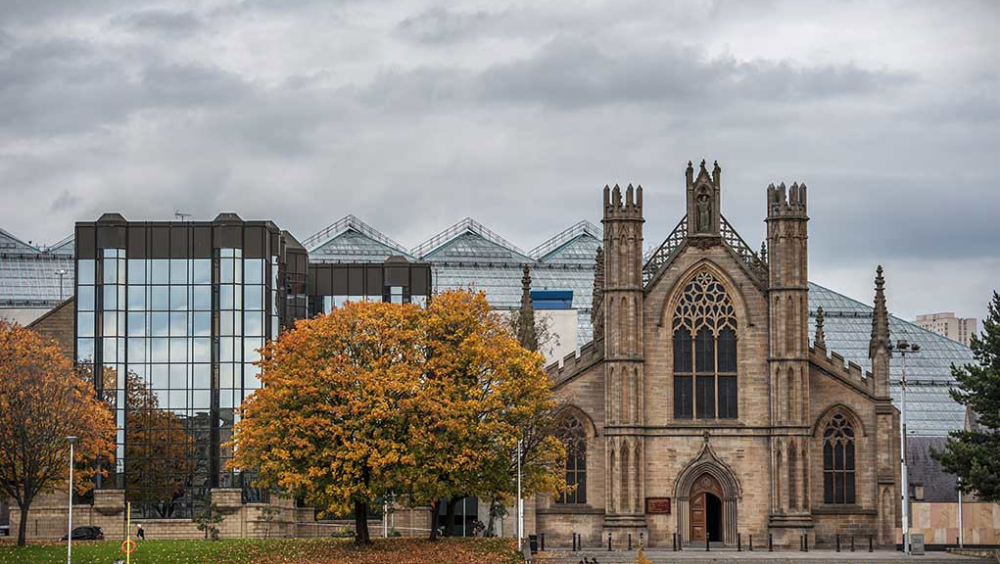St Andrew's Cathedral
19 September 2025 (09:00 - 17:00)
20 September 2025 (09:00 - 17:00)
21 September 2025 (13:00 - 17:00)
St Andrew’s Cathedral is a stunning example of Neo-Gothic architecture, offering visitors a serene atmosphere of prayer and peace. Guided tours are available to provide insight into the church’s daily life, its remarkable artefacts, and the talented artists behind them.
St Andrew’s Cathedral has been seen in a new light since the renovation work of 2011.
Visitors remark on the brightness and colour, now the features of a much-loved church, welcoming all who visit. The artwork and the imaginative cloister garden all enhance this sacred space. Within the Cathedral, you can take time to appreciate the atmosphere of prayer and peace which embraces the visitor. Guides will be available to give a flavour of what makes up the daily programme of this church.
They will also describe the various artefacts and the artists behind them, such as the baptismal font by Tim Pomeroy, the painting of St John Ogilvie by Peter Howson, the sculpted doors by Jack Sloane and Hector McGarva and the altar and lectern by Archbishop Mario Conti and Neil Reid.
The Italian Cloister Garden, with its own entrance from Clyde Street, invites the visitor to read on the wall plaques the story of the Archdiocese of Glasgow and its Cathedral. The monument in the centre courtyard recalls the sinking of the Arandora Star during the Second World War and the impact this event had on the Scots-Italian community.
Overview
"The Roman Catholic Church in Great Clyde Street is justly considered one of the finest ecclesiastical edifices in the city, and occupies a prominent site on the north bank of the river. The exterior is very ornamental, and is fitted up in a plain manner, unlike the general appearance of Roman Catholic churches. The designs were furnished by Mr. Gillespie Graham, architect, Edinburgh." (From Sketches of the History of Glasgow, 1847.)
This description of St. Andrew's Cathedral shows the impact that the building of this Church had on the minds of the people of Glasgow . The driving force behind the building was a priest from the Enzie of Banff, Rev. Andrew Scott. He had been given the care of the Catholics of Glasgow in 1805 and was determined to build a Church that would serve the needs of the growing Catholic population of the city. The foundation stone was laid in June 1814. On December 22nd 1816, Holy Mass was celebrated for the first time within its walls.
For the first two centuries after the Reformation there was practically no Catholic presence in Glasgow, but by the end of the 18th century Glasgow's industrial expansion was attracting many Catholic workers from Ireland and parts of the Scottish Highlands. Scotland ’s Catholic Hierarchy was restored in 1878, and Charles Eyre was named the first post-Reformation Archbishop of Glasgow. In 1884 the Chapter of Canons was re-erected and subsequently St. Andrew's became the Cathedral of the re-established Archdiocese. In 1947, with the establishment of the new Dioceses of Motherwell and Paisley, the Archdiocese of Glasgow recovered the metropolitan status which it had had before the Reformation and St. Andrew's became a Metropolitan Cathedral.
Metered on-street parking, and there are nearby public car parks.
Bikes remain the owners’ responsibility but can probably be put in the porch or cloister garden. The stewards will advise.
Address
168 Clyde Street, Glasgow, G14ER
